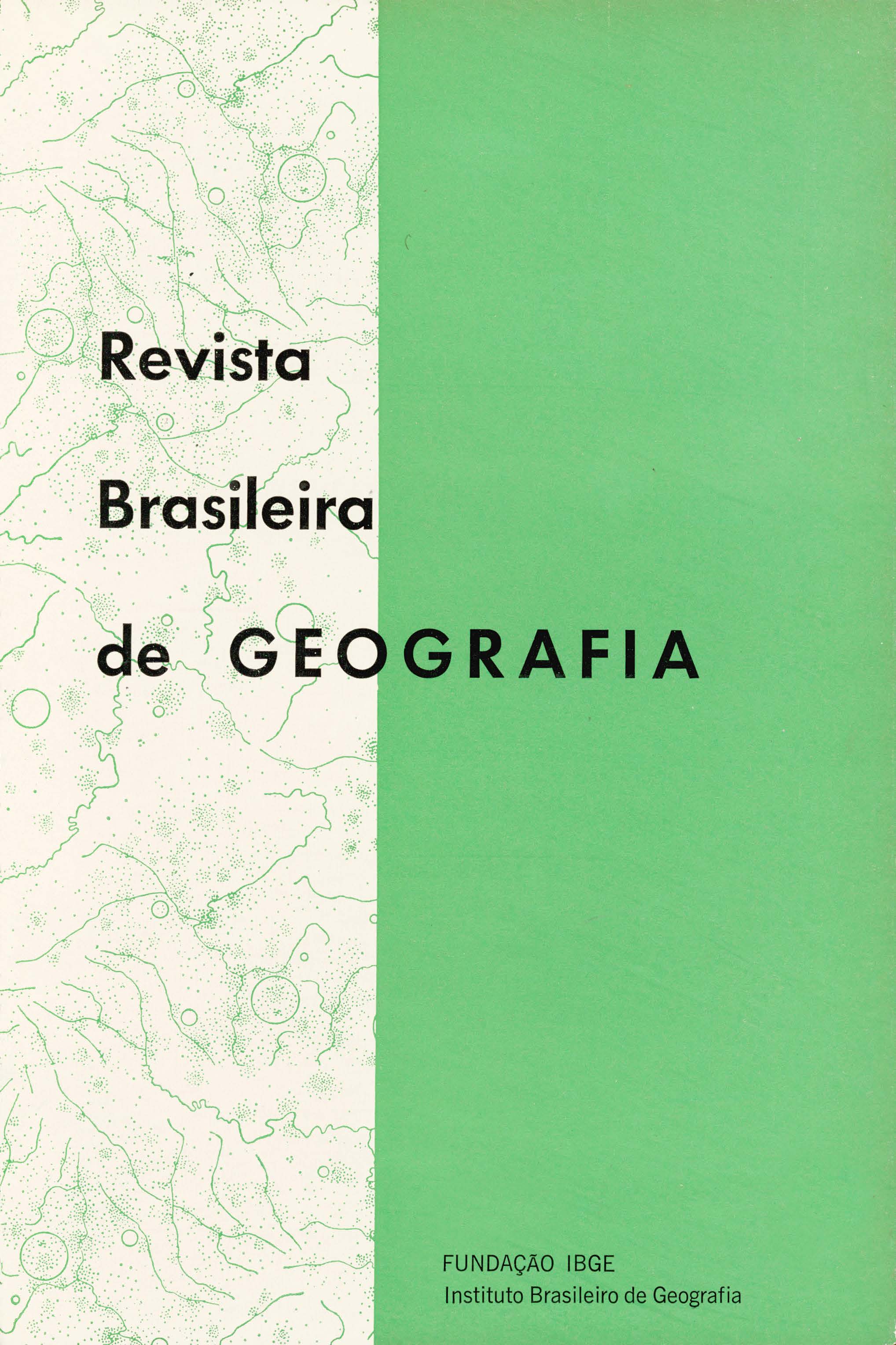Distribuição de atividades agropastoris em torno da metrópole de São Paulo
Palavras-chave:
São Paulo - Estado, São Paulo, Região Metropolitana de - SP, Geografia econômica, Inovações agrícolas, Agropecuária, Economia agrícolaResumo
This work aims to test the application of Von Thünen's model to Brazil. The city of São Paulo was chosen and, therewith, its circumscribing area in a radius of 750 kilometers, in view of the high population concentration and the activities of the paulist metropolis, plus the relatively primordial character existing therein.
The variables utilized refer to the Census data of 1950 and 1970 besides the Production Statistics of the Ministry of Agriculture, referring to soil usage: planted areas of permanent or temporary crops, forest areas and those reserved for pasture, areas where determinate produce is cultivated. These statistics were collected at the "municipio" level.
Rings were drawn over a map of Brazil ("analysis rings"), these centered on the city of São Paulo, each one 75 kilometers across. A squared grid was placed over the rings, each side of the squares 37.5 kilometers long. Two rectangles were drawn on the Equared grid, each one covering a broad highway-railroad axis: from São Paulo towards the South of Goiás and from São Paulo towards the North of Paraná. Having a length of 750 kilometers, each rectangle was 115 kilometers wide. Squares were selected at random in these rectangles, so that the rings be proportionately represented and the "municípios" of the squares supplied the data for the analysis. Said analysis consisted in the verification of the percentage held by each ring in relation to the ensemble, touching a determinate utilization of the soil, as well as the percentage of a determinate utilization, within e, given ring, in relation to the total of the utilization.
Conclusion was reached that the aggro-pastoral activities in the rural space3 that surround the São Paulo metropolis are subject to economic forces that mold a general configuration which can be separated into a form of a model approaching the one proposed by Von Thünen, based on the relation between the unit value of each product and the transportation cost of the same unit.
The first rectangle, to the South of Goiás, showed the following results for 1950: the 1st. ring (corresponding to the 1st. "analysis ring") is that of horticulture-·farming activities and of reforestation; the 2nd. (2nd. "analysis ring") is of industrial plantations, sugar cane and cotton, plus permanent fruit-growing; the 3rd. ring (3rd., 4th. and 5th. "analysis rings"), of permannet crop plantings; the 4th. ring (6th. and 7th. "analysis rings") belongs to the cereals; the 5th. ring (8th. and 9th. "analysis rings") is the domain of rice, pastures and cattle-raising; and, finally, the 6th. ring (10th. "analysis ring") where areas for animal grazing predominate.
Comparing this picture with that of 1970, one can see an augmentation in the amount of land destined to cultivation, principally in temporary crop plantings. One further observes a centrifugal displacement of the various rings, the most important factor being the expansion of the metropolitan nucleus proper. In the external periphery, the production of cereals increased and the plantation of soybeans was developed.
In the rectangle leading from São Paulo to the North of Paraná, a temporal comparison could not be made; the study was made for 1970 only where the observations found in the previous region were confirmed, with emphasis on the distortions caused by other influences, principally those of an ecological order. In this region, the rings are displaced to greater distances, with the cotton area succeeding the sugar cane belt, followed by the permanent plantations ( coffee) and the cereals.






